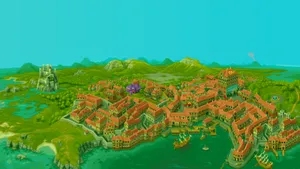Board Game Review: Coimbra
September 28, 2019
You may have heard about a city in Portugal, named Coimbra. Well, this game has nothing to do with it, at least not really.
It is the age of discovery, Coimbra is thriving and you are the head of one of Coimbra’s most wealthy families, looking to earn prestige. To do so you have to get in favour with the city's most influential factions, by buying off clerics, scholars, council members, and merchants or offering them a little extra security, as well as visiting monasteries and funding new expeditions will lead you to prestige.
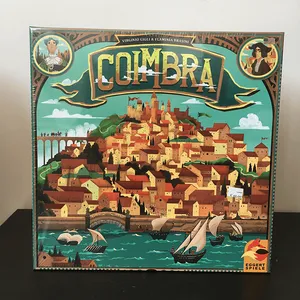
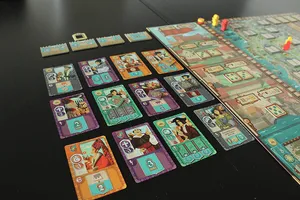
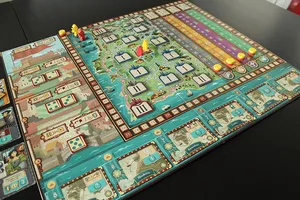
So how does it work exactly?
Coimbra is played over exactly 4 rounds and each round consists of 6 recurring phases. I will briefly explain these phases, but first a few prerequisites:
Personal assets
Each player starts with 7 coins, 7 guards, both kept on their personal tracking board and with 2 faction characters cards from the starters deck.
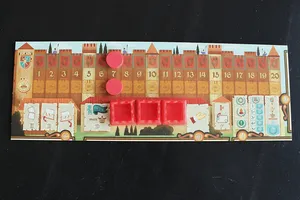
Bidding away
The game works with a bidding system, in some occasions the lowest bid will serve you the best and in others the highest will. Like with bidding, you pay the price you've bid, only here it will depend on which faction character card you'll choose. But either way you can only pay with coins or guards.
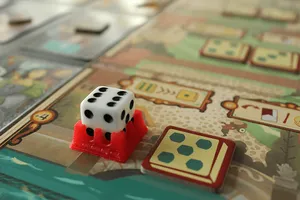
Favoring faction characters
Except having different faction character cards, there are also different bonuses linked to them. Some will provide you an immediate bonus, some during the game in a certain phase and others at the end of the game. So always try to plan a bit ahead.
The bonuses themselves vary from victory points to influence, to increasing money or guards, or letting your pilgrim travel to a monastery.
So for example, an increase on the influence track of the same faction that matches the character you just favoured.
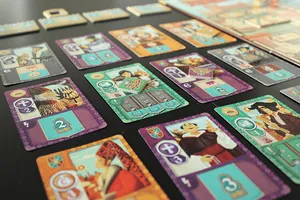
Visiting monasteries
If the bonus of a character card gives you movement points for your pilgrim, you move over to that piece of the board and move your pilgrim the amount of steps you just received. If your pilgrim stops at a monastery they haven't visited yet, you receive a bonus. But just like on character cards, there is a difference between immediate bonuses and the ones you'll receive at the end of the game.
side note: there are usually 2 moments in each round where you can move your pilgrim. By collecting an immediate bonus or during the phase that lets you collect your income from the influence track.

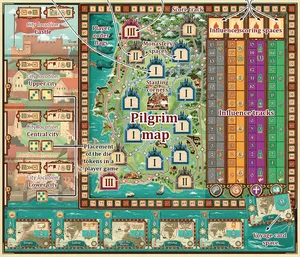
The game phases:
- Rolling dice at the start of each round. There are 5 different color dice each representing a faction, except for the white die. A fixed amount of dice from each color has to be rolled every round. These will represent the dice pool for all players.

-
Drafting and placing dice in order to make the right choice the player has to choose the die which color represents the faction they want to get in favour. And as I mentioned before the die also depicts the bid you're making to buy a certain character card.
-
Retrieving dice after every player has bid and bought character cards by drafting and placing dice, each player retrieves their chosen dice from the city locations they're in.
-
Determine the new player order by counting crowns the new player order is decided and from here on you proceed with that new player order.
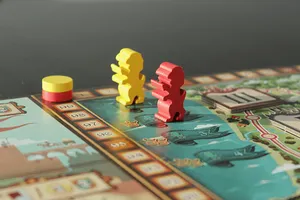
-
Cash in your influence income. So remember that I told you that each die could have a color of a faction or be a joker? Now's the time to make use of that color. In this phase you move up on the influence track of the faction that matches the colours of the dice you've picked earlier. You immediately gain the benefits of proceeding on the influence track.
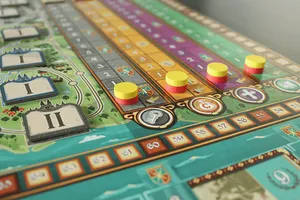
-
Funding an expedition. At the end of each round the last thing you can decide to do or not is to fund an expedition. Investing in these expeditions means that you will gain a certain benefit at the end of the game that might increase your score significantly, but only if you choose wisely of course.
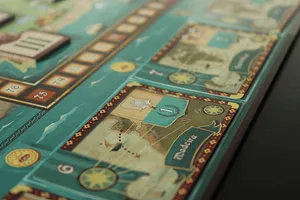
After repeating all that for 4 rounds, all players will count their influence and bonuses to see who will be the most prestigious family of Coimbra and thereby wins the game!
Final conclusion
Coimbra is strategic but easy to learn, challenging but light enough. It's a great game and it's playable by 2 to 4 players.
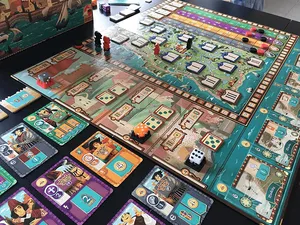
Plus:
- quick and easy setup
- rulebook is nicely organised
- language independent components!
- beautifully designed game
Min:
- works better with 3 players (in comparison with 2)
Personal complexity score: 2/5

